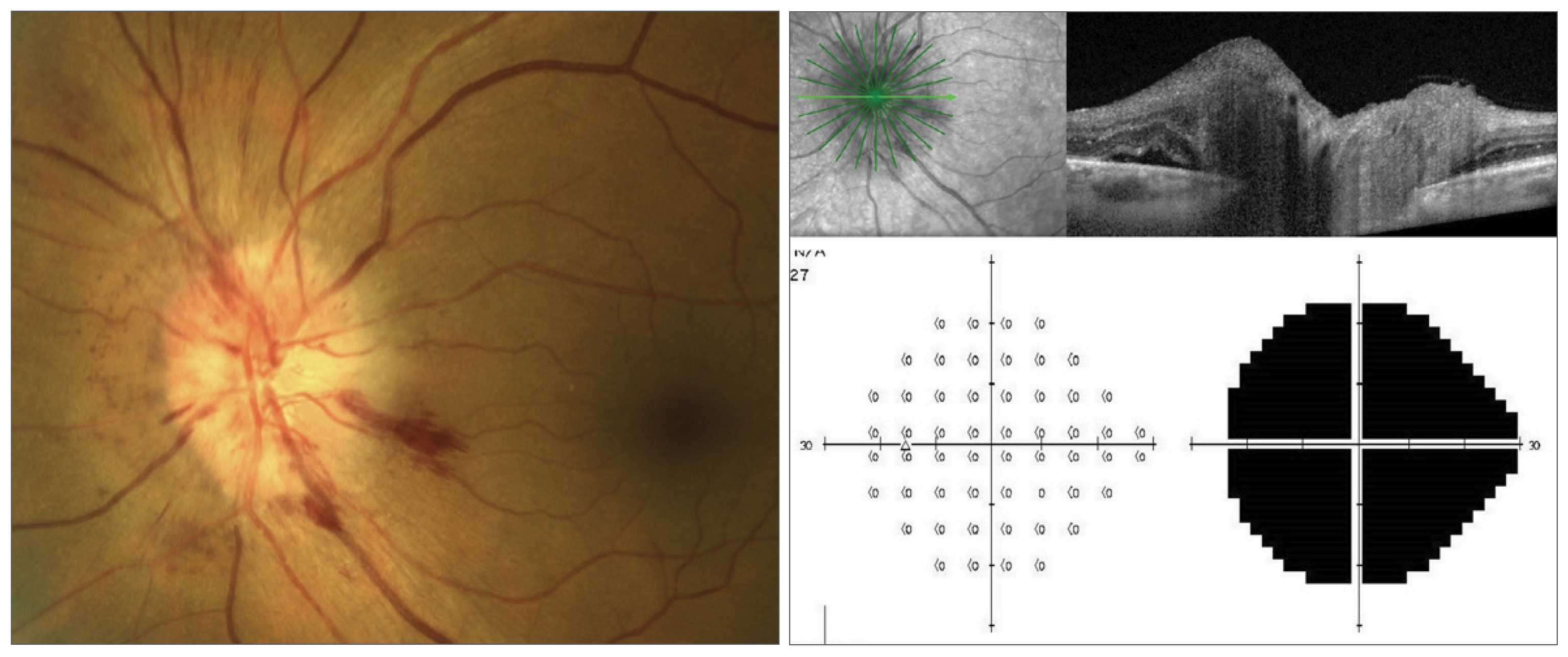 |
| Patients with AAION generally present with poor VA, but in rare cases, they may present with normal VA, emphasizing the importance of giant cell arteritis workup in older adults with acute vision loss. Photo: Mohammad Rafieetary, OD. Click image to enlarge. |
Optic disc edema (ODE) is one of the most common reasons for referral to neuro-ophthalmology, warranting greater research to delve into underlying conditions that may present with it. In one new study, researchers evaluated the most common causes of ODE in patients with severely compromised vision (best-corrected visual acuity [BCVA] of 20/400 or worse) at presentation to tertiary neuro-ophthalmology clinics.
Of the 656 total patients included with ODE, only 49 (7.8%) had initial BCVA of 20/400 or worse. Included at baseline were 54 eyes and 49 at follow-up. There were 29 women and 20 men patients, with an average age of first visit at nearly 60 years of age; female patients were older than males. ODE was caused by optic neuritis (ON) in 40.7% of cases, while nonarteritic anterior ischemic optic neuropathy (NAION) comprised 40.7%, arteritic anterior ischemic optic neuropathy (AAION) comprised 9.3%, uveitis at 5.6%, papilledema from idiopathic intracranial hypertension (IIH) at 1.6% and Vogt-Koyanagi-Harada disease also at 1.6%.
BCVA at baseline was not different the ON and NAION group but did improve significantly in the ON group upon final reading. The most common ODE cause in those less than 40 was due to ON (83.3%), while the two most common causes in those over 80 were NAION (60%) and AAION (40%). Between ages 60 to 80, NAION was the only cause.
Looking at their findings the researchers explained, in an article published in Journal of Neuro-Ophthalmology, that “patients with ODE and poor vision at presentation represent a minority of cases seen in neuro-ophthalmology clinics (<10%). ON and NAION are the two most common causes of ODE with poor vision at presentation.” Expanding upon these observations, the authors relay that follow-up is important to differentiate ON from NAION, as difficulty differentiating the two can exist initially.
Two previous reports reflect these findings, with one citing the most common causes of ODE being NO and NAION, while the other reported ON and anterior ischemic optic neuropathy to be most common. There was favorable visual prognosis in those with ON, but no improvement seen in BCVA for those in the NAION group, a finding consistent with general knowledge of NAION presenting poor visual prognosis and better outcomes in younger patients.
In those over 80, AAION was also common. Of the four identified with AAION, temporal artery biopsy was present is three and elevated c-reactive protein and erythrocyte sedimentation rate were both found in all. Three reported jaw claudication and two endorsed headache. The authors stress it is crucial to distinguish AAION from NAION to prevent irreversible vision loss in the unaffected eye of those with AAION.
While these three conditions were most common, the authors cautioned that “although a smaller proportion of patients presented with AAION, VKH, uveitis and IIH, it is important to be aware of these diagnoses as prompt treatment may preserve vision and be life-saving.”
Pandya BU, Jhaveri A, Shamshad F, Margolin EA, Micieli JA. The causes of optic disc edema in patients presenting with significantly compromised vision. J Neuroophthalmol. November 6, 2023. [Epub ahead of print]. |

